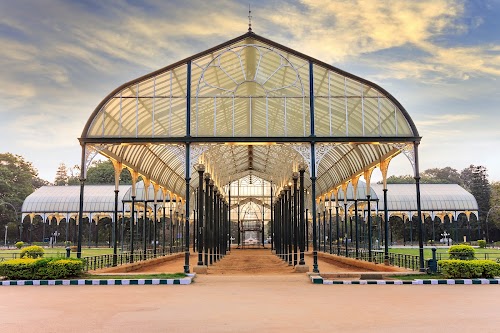
Lalbagh Botanical Garden
Bengaluru, India
- Admire bonsai plants
- Attend flower shows at Glass House
- Explore diverse plant collections
- Stroll around the serene lake
- Visit the Lalbagh Rock formation
Known for:
Description:
Lalbagh Botanical Garden is a renowned 240-acre garden located in Bangalore, India. A popular destination for both locals and tourists, it showcases a diverse collection of flora, including exotic and rare plants from around the world. The garden features well-manicured lawns, vibrant flower beds, serene lotus ponds, and ancient trees, providing a tranquil escape from the bustling city. Key attractions include the iconic Glass House, inspired by London's Crystal Palace, which hosts annual flower shows, and the Lalbagh Rock, a 3,000-million-year-old geological formation. Visitors can enjoy leisurely strolls, photography, and learn about various plant species. The garden also has a lake, an aquarium, and a bonsai garden, offering a holistic experience for nature lovers. With its rich botanical diversity and serene ambiance, Lalbagh Botanical Garden is a must-visit for anyone seeking respite in nature's beauty.
History:
Lalbagh Botanical Garden was originally commissioned by Hyder Ali, the ruler of Mysore, in 1760 and later completed by his son, Tipu Sultan. Inspired by Mughal gardens, Hyder Ali envisioned a private garden filled with rare plants and fruits from around the world. Tipu Sultan further enriched the garden by importing numerous plant species from various countries, including France, Persia, and Afghanistan. In the late 19th century, under British rule, Lalbagh was transformed into a botanical garden, and its collection expanded significantly with the addition of indigenous and exotic plants. Over the years, Lalbagh has played a vital role in plant conservation and research, establishing itself as one of the most important botanical gardens in India. Today, it continues to attract visitors with its historical significance, botanical diversity, and serene atmosphere.